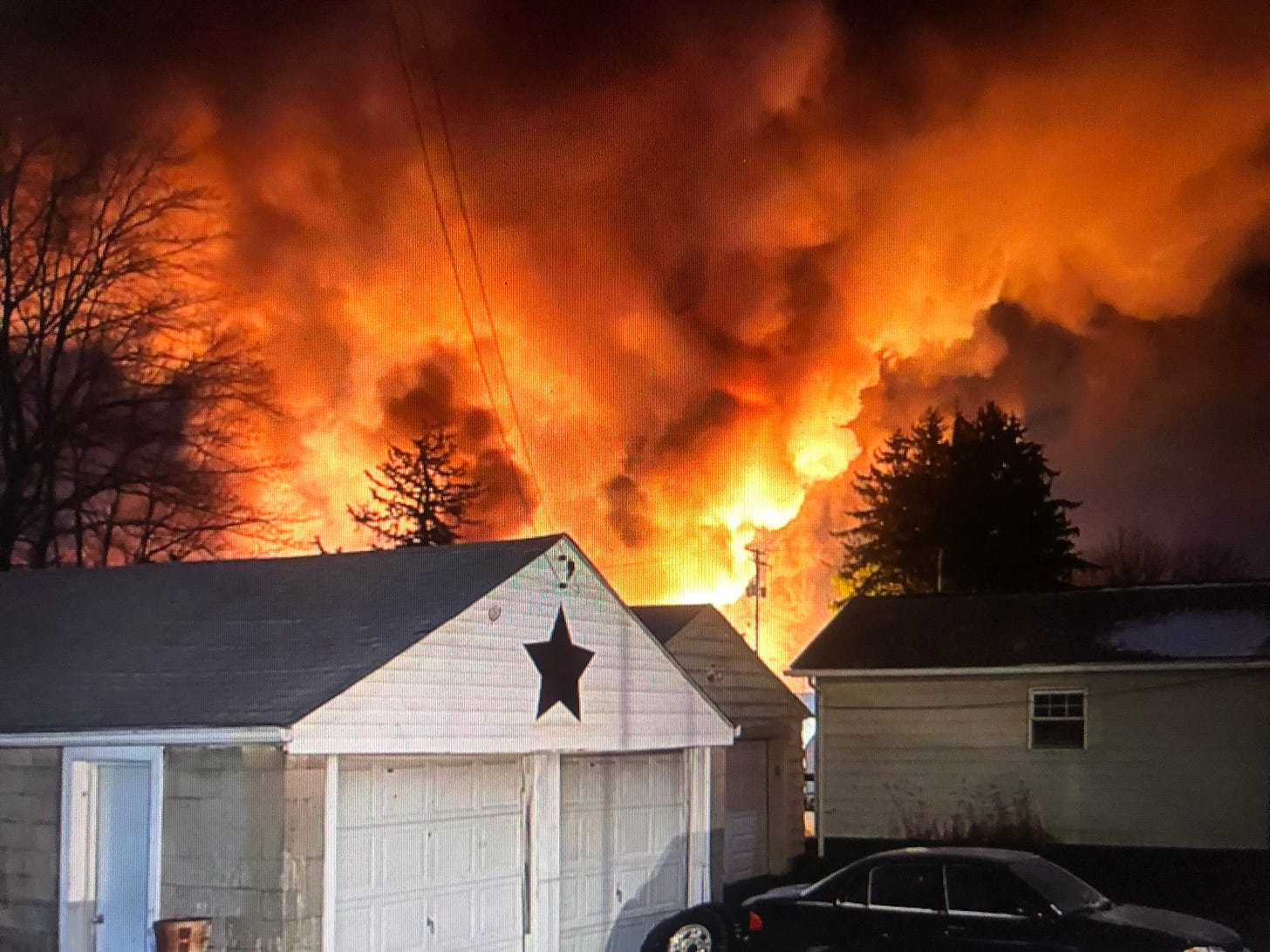Something Is VERY Wrong With The East Palestine Narrative—By Eric Coppolino
A Guest Commentary
Mon, Mar 27 at 10:32 PM
Problems with the standard East Palestine narrative — something is missing...
I’ve been staring at East Palestine for six weeks, and there appear to be elements of the fact pattern that do not add up to the claim of the standard narrative. This is what I know, based on our investigation for the chronology we are developing. You can read that here. There are actually two — one is a list of lawsuits.
https://chironreturn.org/chronology-of-the-east-palestine-train-derailment/
The question I am seeking to answer is, re dump and burn, why was this decision made? Here are my story notes-in-progress, which I would summarize as, “Good morning, it's Opposite Day."
— There has never been a dump and burn in railroad history, even in the decade prior to its being banned by 1980 regulations. There is always dump and remove, or decant (into tankers) and remove. Spills happen every two weeks — the burn part is unprecedented and there is rarely a need to dump. The typical approach is to take the contaminated dirt to a hazardous waste landfill.
— A 2022 EPA guidance, which says how to interpret laws and regs, repeats the ban on dump and burn except only after careful consideration when there is absolutely no other alternative (which has never happened in civilian society; it happens in the military).
— Fully enclosed hazmat tanker truck driver recovery operation (entirely routine procedure when there are damaged tanker cars) was initiated the night of Friday Feb. 3 — and then called off within 24 hours (on Friday night or Saturday). Who called it off and why?
— Fire lines pulled from keeping tankers cool.
— No samples of soot or wipe samples from inside the tanker cars — missing crucial data that would reveal the true nature of the incident.
— Point source soot samples are also missing. These would also be tell-all.
— Decision to breach, dump and burn was totally irrational and nobody understands it. The more experience people have, the less they understand it. EPA was involved; it cannot merely be a bystander.
— No state or federal emergencies were declared, depriving governments of emergency powers and agencies of certain kinds of authority (we now from “covid” how much power a state of emergency grants; in this case, that was never done).
— Analysis of samples from PTRMS lab (a high-end mobile chemistry analysis lab) are bogged at Carnegie Mellon, in custody of Albert Presto, who is not releasing them.
— Pressure release valves (PRVs) were working fine, per NTSB report; the tanker cars were not in jeopardy. Other reports say the VCM was not in jeopardy of exploding and besides, they can easily decanter it into tanker trucks as is done regularly.
— Five dead CTEH guys in airplane crash (eyewitnesses to point source sampling), who were at the East Palestine scene taking samples on behalf of the railroad and took samples…they died en route to the next mission.
— People are still sick in Palestine a way they should not be based on every other incident my source has worked on for 30 years. The other explanations are not very plausible, such as offgassing from stream aeration.
— Chemicals that are currently banned from production by federal law are DDT, PCBs, PBDEs, some CFCs, all chemical warfare agents and chemicals banned from production by voluntary agreement with chemical industry are PFOS and PFOA.
OK, what really happened?
—Eric Coppolino



They are trucking 2 million gallons of East Palestine contaminated water to a Baltimore water treatment plant (that has questionable facilities), that will be treated and released into a tributary of the Chesapeake Bay. This sounds like another totally insane idea.
These tank cars are also designed and built to retain their integrity in the event of an accident. Fill valves and relief valves are protected, and the type of steel the tank is made from does not shred into shrapnel if the tank is over pressurized to the point of failure, but would simply split open. Cooling any tanks that were in danger of overheating with fire hoses would have been more than adequate.